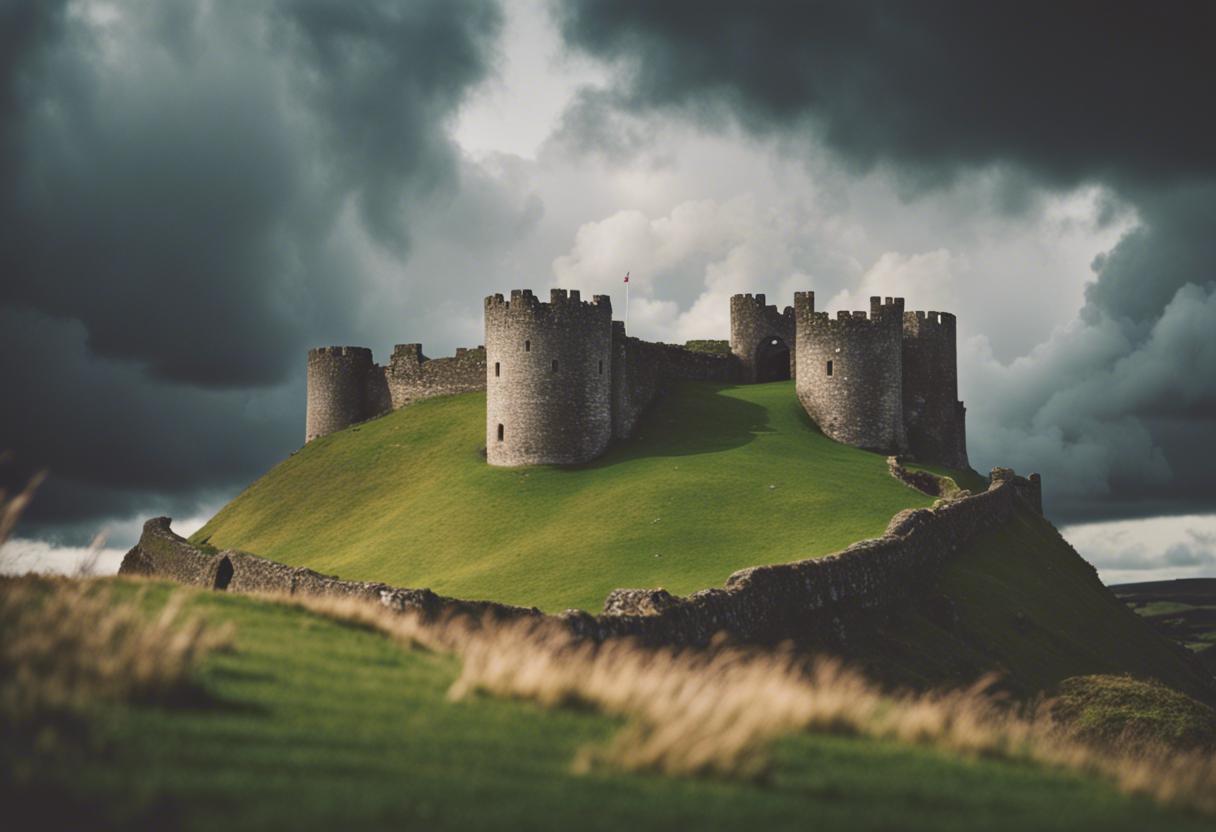An undiscovered Roman fortress discovered in Pembrokeshire, Wales challenges the perception that the local Celtic tribe, the Demetae, were on amicable relations with the Romans. The site had been concealed under a massive and overgrown field which explained why the land hadn’t been successful for agricultural usage, as the farmer continually hit stone.
The fort’s discovery is attributed to Dr Mark Merrony, an esteemed Roman specialist and lecturer at Oxford University, who has described the find as large and of significant national importance. The fort’s proximity to a newly identified Roman road added to Dr Merrony’s excitement.
The fort is considered to be from the first to third centuries, coinciding with the period the Demetae tribe occupied southwest Wales. It was widely accepted that the Demetae favoured the Romans, leading to a reduced need for a substantial military presence. Yet, the discovery of the fort suggests a more militarised reality, leading Dr Merrony to rethink the narrative of a Roman-friendly Demetae, instead suggesting strong-handed Roman influence in the region.
He compared the fort’s structure and size to Pembrokeshire’s only known Roman fort, found near Haverfordwest. Both fortresses are now connected to a previously unknown Roman road system.
Dr Merrony, originally from Pembrokeshire, had often travelled a notably straight road, suspecting its Roman origins. On examining satellite imagery, he noted a field of a size suggestive of a Roman fort. Upon visiting the field, he found a triangular object protruding from the ground, resembling a Roman roofing slate. The slate’s distinct shape and the grooves underneath it, integral for fitting subsequent layers, confirmed it as genuine, giving the conclusive evidence needed for the site’s historic value.
Clutching his computer, he rapped on the door of the local landowner, proposing the idea that the field in question might be atop a Roman fort. The landowner responded by informing him that the area, replete with slate and stone fragments, gave an indication of much more coming from below ground.
Merrony deduced that these pieces could be remnants from collapsed structures with timbers long decayed, leaving only slate behind. Accompanied by rust-coloured stains from nails and unique chisel marks, he found some of these slate shards allowed for other pieces to lie on top or beneath them. The found characteristics were typically seen in relics from Romano-British structures.
The fortress, comprising an area of nearly 185 by 155 meters, was preserved over centuries by means of large parliamentary enclosures of common land of the era, denoted by hedges, walls and embankments. Merrony implied that it fit the typical features of such forts, with a card-like shape, rounded corners and a considerable-sized ditch with an outer and inner bank. The fort’s strategic positioning allowed superior views over a river valley from a slope whilst being in proximity to two nearby springs for water supplies, as was usually the case with such setups.
As the editor-in-chief of Antiqvvs, a publication discussing archaeology, ancient art and history, Merrony intends to elaborate on his recent findings in the August issue. His other credits entail identifying two Roman villas located in Pembrokeshire and Oxfordshire in 2002 and 2016, respectively. Additionally, he discovered a Roman path along the southern edge of the Preselis in 2022—contradictory to the belief of the Romans’ lack of traversal in much of Wales.
In order to safeguard the new findings, the exact site will remain undisclosed for the time being. That said, Merrony insists on conducting a geophysical survey, which requires adequate funding. In light of the enormity of such a revelation, the involvement of regional archaeological trusts is also seen as a potential necessity.
He anticipates discovering proof of a neighbouring “vicus”, a typical non-military settlement which usually flourished near a military encampment. He proposes that this was an auxiliary fort of the Romans, possibly designed for a single contingent of approximately 500 soldiers.
He holds the view that this site would be classified as a protected monument: “It is a bona fide classic,” – Guardian.

